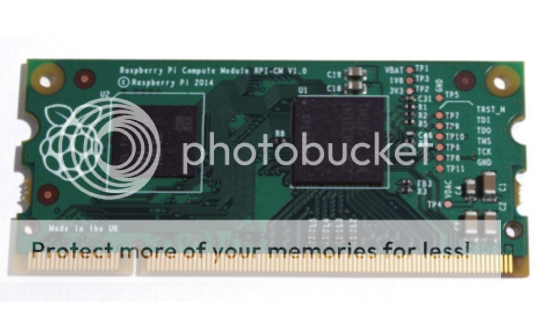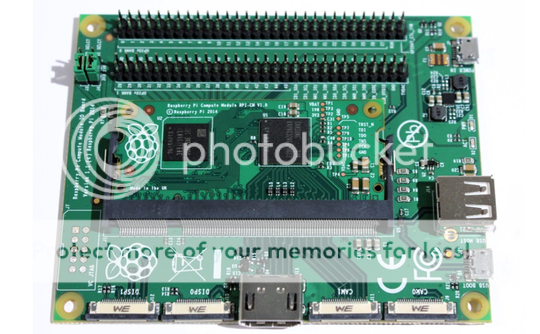- Joined
- Jul 28, 2007
- Messages
- 3,327
- Reaction score
- 3,055

The Raspberry Pi Foundation has unveiled a new version of its eponymous single-board computer, shrinking it down further to a board that fits into a small outline dual in-memory module (So-Dimm) socket for integration into a project by business and industrial users as well as hobbyists.
Due to be available from June, the Raspberry Pi Compute Module contains the same functional components as the original Raspberry Pi – principally the Broadcom BCM2835 system on a chip (SoC) with its integrated 512MB RAM – but adds a 4GB eMMC flash storage chip.
The flash storage is necessary because the Raspberry Pi Compute Module is much smaller than the original Pi, and lacks the SD card slot, which is used to boot the system from a flash memory card holding an operating system image.
However, using the So-Dimm form factor and connector means that many more of the processor input/output (I/O) functions are available for the user to connect to external hardware when integrating it into a project.
James Adams, director of hardware for the Raspberry Pi Foundation, wrote on the organisation's blog: "You get the full flexibility of the BCM2835 SoC (which means that many more GPIOs [general purpose I/O] and interfaces are available, as compared to the Raspberry Pi), and designing the module into a custom system should be relatively straightforward as we've put all the tricky bits onto the module itself."

Initially, the new Raspberry Pi Compute Module will be sold paired up with a purpose-built I/O board and sold as the Raspberry Pi Compute Module Development Kit via the same two distributors, RS and Farnell Element14.
However, the Raspberry PI Compute Module will afterwards be available to buy either individually, or in batches of 100. In the latter case, pricing will work out at about $30 (£18), according to Adams, so the individual unit price will be slightly higher than this.
The Compute Module IO Board (pictured above) provides the necessary power to the Raspberry PI Compute Module, brings the processor interfaces out to pin headers and flexi connectors, and gives users the ability to program the Flash memory. It also provides the HDMI and USB ports seen on the original Pi, enabling the user to connect to a display and keyboard.
This board provides both a starting template for those who want to design with the Raspberry PI Compute Module, and a quick way to prototype and test a system before going to the expense of fabricating a custom circuit board.
Source: IT news, reviews and analysis for UK IT professionals - V3.co.uk
